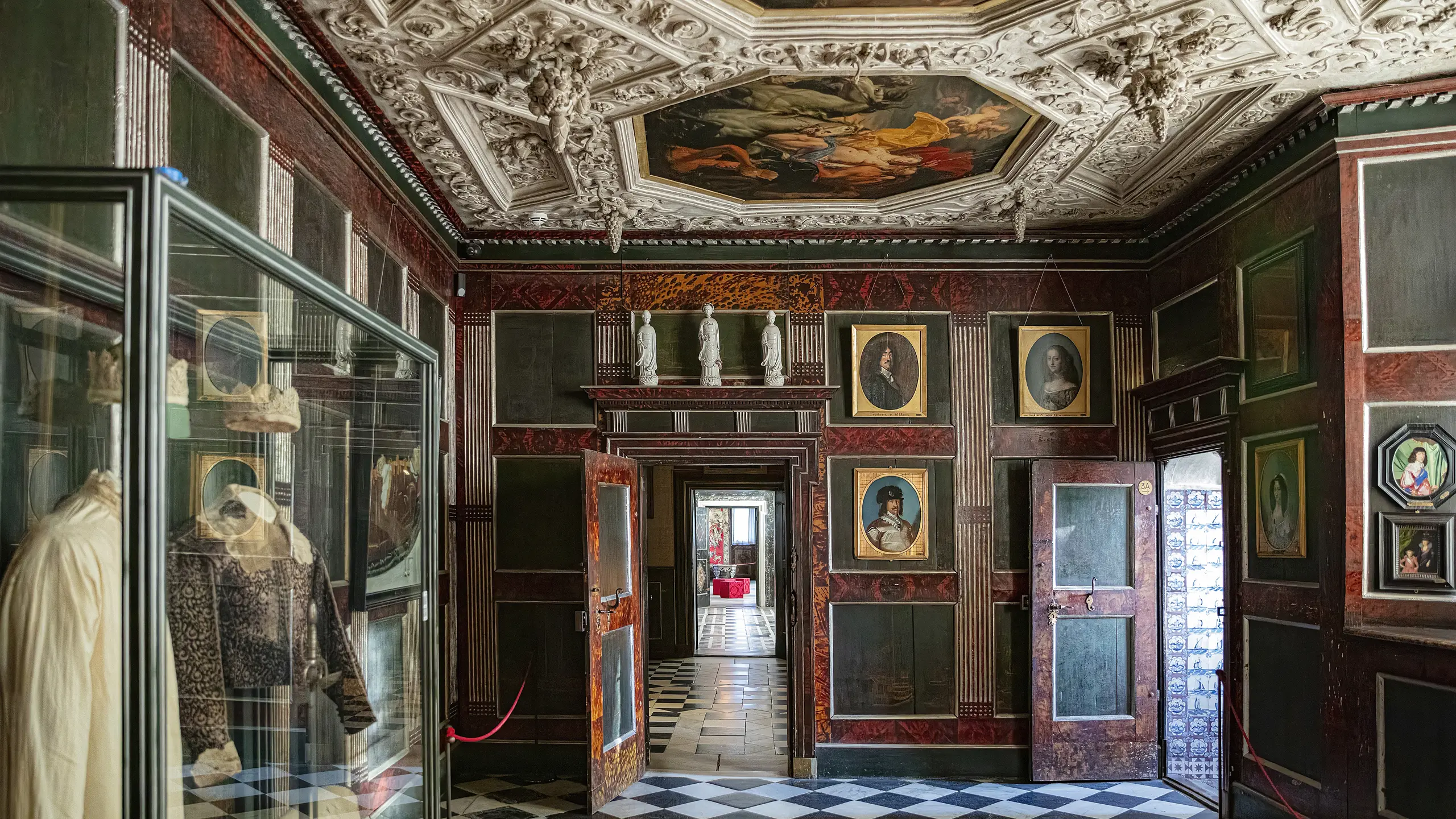Christian IV’s Bedchamber (room 4)
This bedchamber was one of Christian IV’s private chambers. This is where he passed away, on 28 February 1648.

Christian IV in his private moments
Christian IV's death
Christian IV passed away in this room, on 28 February 1648. Normally, Christian IV did not go to Rosenborg during the winter months. However, around 21 February 1648, when it was clear that The King was dying, he requested to be transported – by sled – from Frederiksborg Castle in Hillerød to Rosenborg in Copenhagen. The only reason for this rather long and very cold journey was that Christian IV wished to end his days here, in his small favourite castle.
On 27 February, The King confirmed his Christian faith and received a final blessing and holy communion. At five o’clock the following afternoon, 28 February, he quietly passed away right here, in room. His daughter Leonora Christina and her husband, Corfitz Ulfeldt, were with him during his final hours. Above Christian IV’s bed was a canopy, hanging from a hook in the ceiling. You can still see the hook today.
During and after Christian IV’s time
Like the Winter Room and the Writing Room, the Bedchamber was Christian IV’s personal chamber. As a rather exceptional feature for the time, Christian IV had an ensuite bath and toilet in connection with the Bedchamber.
The objects you can see in the room today all belonged to Christian IV. The wall panelling and doors also date to the time of Christian IV, although the frames around them were originally decorated with painted flowers.
During the 1660s, Frederik III and Sophie Amalie, who were both very fashion-conscious, had the woodwork decorate in trendy ‘Chinese’ style while they lived at the castle. The green lacquered panels are decorated with line drawings in gold depicting landscapes, boats and interiors, based on descriptions of China from the time and older Chinese novels.
Objects in the room
If you are physically at the museum, you can admire the outstanding objects and read more about them below.
Please note that these descriptions are brief and often without images. They serve as an additional resource for those who wish to gain more knowledge about each object, such as who created them, their origin, and significance.

